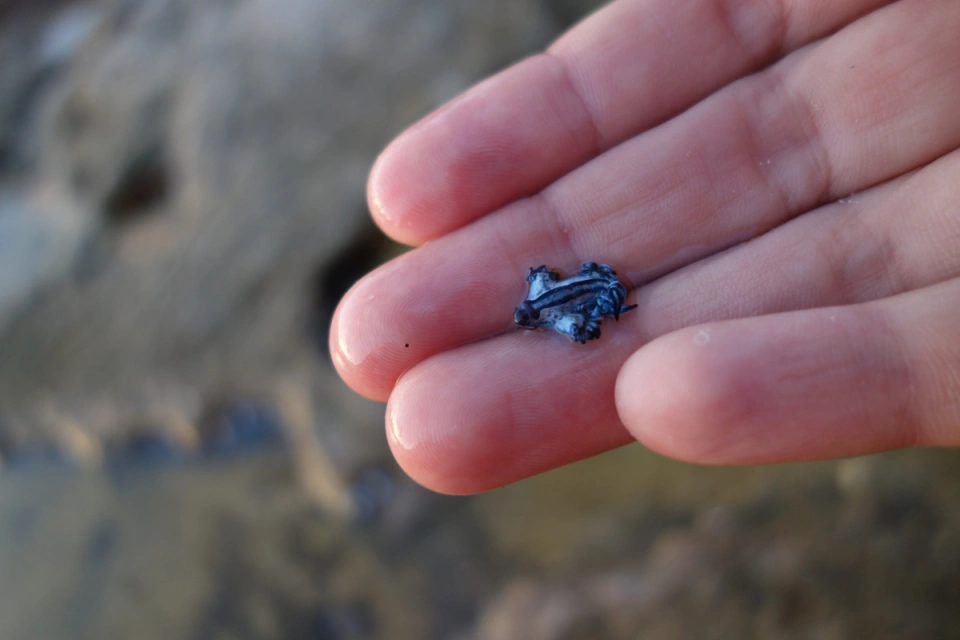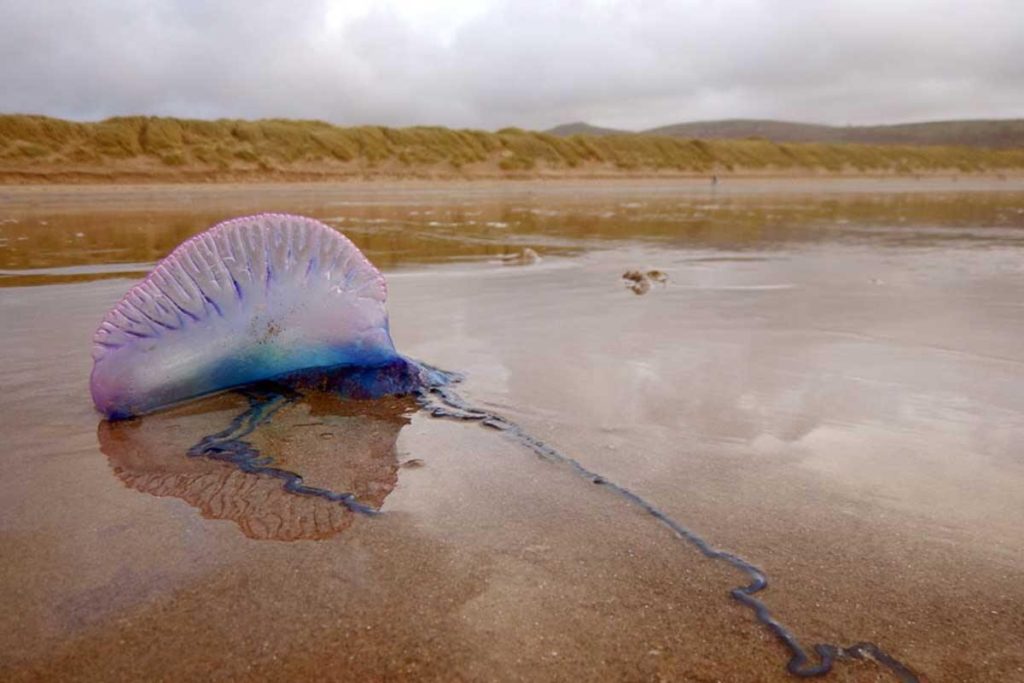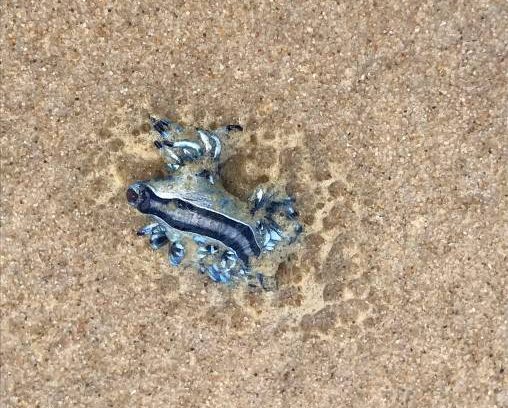By Janya Edirisinghe
Glaucus Atlanticus, commonly known as the blue dragon/blue glaucus are a species of nudibranches (sea slugs). However, unlike terrestrial sea slugs, these sea slugs are very brightly coloured. These colours have inspired a series of nicknames, such as blue dragon, sea swallow, and blue angel.

CHARACTERISTICS AND APPEARANCE
The Blue Dragon species is pelagic which means that they float on the water surface, due to the air stored inside their stomachs, which is not a common characteristic of most nudibranchs. The creature often floats on its backside, showing its brightly coloured underbelly to airborne predators. The bright and dark blue colour camouflage against the backdrop of ocean waves, and the animal’s silvery grey dorsal blends in with the bright sea surface, concealing it from predators below. The deep blue colour may also help reflect harmful UV rays. This phenomenon is called countershading where the animal is built in a way to help it avoid being attacked by both flying and swimming predators while floating in open water.
Additionally, the Blue Glaucus has a flattened, tapered body, along with six appendages that branch out into finger-like cerata – they almost look like horns. Cerata are long, slender structures that sting when hunting or when the Blue Glaucus feels threatened.
FOOD AND DIET
Like other sea slug species, the blue glaucus isn’t venomous by itself. They store venom in their bodies mostly derived as they feed on other pelagic, venomous creatures including the Portuguese Man o’ War and the Blue Button Jelly. These sea slugs will then store these toxins within their own tissues. The blue dragon has hard disks inside its skin and a protective layer of mucus that shields them against these stinging cells – of which it can accumulate a significant amount. This ability provides the blue glaucus with a defence mechanism against predation. Cannibalism is also very common between this species – these slugs won’t hesitate to eat other Blue Glaucus if they are unable to find other pelagic creatures to feast on.

HABITAT
Glaucus Atlanticus thrive in warm temperate climates and are usually found in tropical/subtropical waters. These sea slugs are passive swimmers which means that they are carried along by the winds and ocean currents. A group of blue glaucuses floating together is called a ‘blue fleet’. Since they float with the current, these ‘blue fleets’ can end up being stranded in beaches accidentally and they can be found in almost every ocean – there are several records of these creatures being found along Indian coastlines. Humans handling the slug may receive a very painful and potentially dangerous sting, hence it is not advisable to have close contact with these creatures. One thing to keep in mind is that the venom of the Blue Glaucus remains active even after it dies!
Interestingly, Blue Glaucus are now appearing in regions where they have never been seen before and scientists theorize that this may be due to the cyclical changes in the Portuguese Man o’ War populations, warming oceans and increased storm activity.
LIFESPAN AND REPRODUCTION
The life expectancy of the Blue Dragon is short and ranges from between one month to one year.
The Blue Glaucus, like all nudibranchs, is hermaphroditic – each individual produces both egg and sperm. An individual cannot fertilize its own eggs, however, and hence pairs must still mate. Long, spiral-shaped eggs are produced by both males and females and often float freely in the open water or stick to nearby surfaces.

THREATS
Many people want to add these creatures to aquariums all around the world, but keeping the Blue Glaucus in confinement is impractical because of its diet, as it is nearly impossible to obtain the required number of Portuguese Man o’ War, and those kept as pets often starve to death.
Moreover, ocean acidification caused by an increase in C02 levels due to global warming has led to a reduction of food that the Portuguese man o’ war eats (such as shrimp and small adult fish), eventually threatening Blue Glaucus populations.
Additionally, pollution represents an ongoing threat to the survival of Blue Glaucus. Harmful objects can be fatal to this sea slug as well as the toxins in the trash.
As mentioned above, cannibalism is common among this species, so other Blue Glaucus impose a threat to this sea slug. Few studies that have been conducted on the Blue Glaucus, show that loggerhead sea turtles may be one natural predator. A study on this species found that 42% of their stomachs contained remnants of blue dragons.
In conclusion, like most marine invertebrates, there is little information available regarding the conservation status of the Blue Glaucus, therefore, more research has to be done into this area, so that these creatures do not go into extinction.
Leave a Reply Cancel reply
You must be logged in to post a comment.
